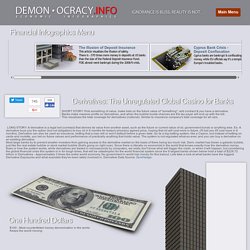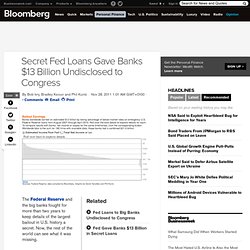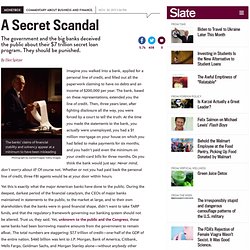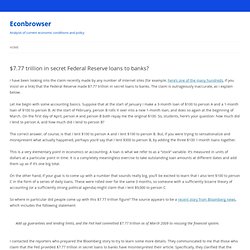

Derivatives - The Unregulated Global Casino for Banks. Note the little man standing in front of white house.

The little worm next to lastfootball field is a truck with $2 billion dollars. There is no government in the world that has this kind of money. This is roughly 3 times the entire world economy. The unregulated market presents a massive financial risk. The corruption and immorality of the banks makes the situation worse. If you don't want to bank with these banks, but want to have access to free ATM's anywhere-- most Credit Unions in USA are in the CO-OP ATM network, where all ATM's are free to any COOP CU member and most support depositing checks.
Keep an eye out in the news for "derivative crisis", as the crisis is inevitable with current falling value of most real assets. Secret Fed Loans Gave Banks Undisclosed $13B. The Federal Reserve and the big banks fought for more than two years to keep details of the largest bailout in U.S. history a secret.

Now, the rest of the world can see what it was missing. The Fed didn’t tell anyone which banks were in trouble so deep they required a combined $1.2 trillion on Dec. 5, 2008, their single neediest day. Bankers didn’t mention that they took tens of billions of dollars in emergency loans at the same time they were assuring investors their firms were healthy. And no one calculated until now that banks reaped an estimated $13 billion of income by taking advantage of the Fed’s below-market rates, Bloomberg Markets magazine reports in its January issue. Saved by the bailout, bankers lobbied against government regulations, a job made easier by the Fed, which never disclosed the details of the rescue to lawmakers even as Congress doled out more money and debated new rules aimed at preventing the next collapse. ‘Change Their Votes’ The Fed, headed by Chairman Ben S.
The $7 trillion secret loan program: The government and big banks should be punished for deceiving the public about their hush-hush bailout scheme. Photograph by Jupiterimages/ Getty Images.

Imagine you walked into a bank, applied for a personal line of credit, and filled out all the paperwork claiming to have no debts and an income of $200,000 per year. The bank, based on these representations, extended you the line of credit. Then, three years later, after fighting disclosure all the way, you were forced by a court to tell the truth: At the time you made the statements to the bank, you actually were unemployed, you had a $1 million mortgage on your house on which you had failed to make payments for six months, and you hadn’t paid even the minimum on your credit-card bills for three months. Do you think the bank would just say: Never mind, don’t worry about it? Of course not. Yet this is exactly what the major American banks have done to the public. The banks’ claims of financial stability and solvency appear at a minimum to have been misleading—and may have been worse. So what to do? 7.77 trillion in secret Federal Reserve loans to banks?
I have been looking into the claim recently made by any number of internet sites (for example, here’s one of the many hundreds, if you insist on a link) that the Federal Reserve made $7.77 trillion in secret loans to banks.

The claim is outrageously inaccurate, as I explain below. Let me begin with some accounting basics. Suppose that at the start of January I make a 3-month loan of $100 to person A and a 1-month loan of $100 to person B. At the start of February, person B rolls it over into a new 1-month loan, and does so again at the beginning of March. On the first day of April, person A and person B both repay me the original $100. The correct answer, of course, is that I lent $100 to person A and I lent $100 to person B. This is a very elementary point in economics or accounting. On the other hand, if your goal is to come up with a number that sounds really big, you’ll be excited to learn that I also lent $100 to person C in the form of a series of daily loans.